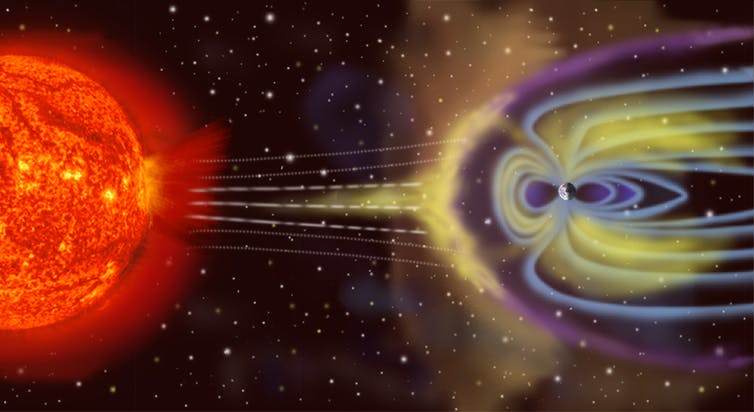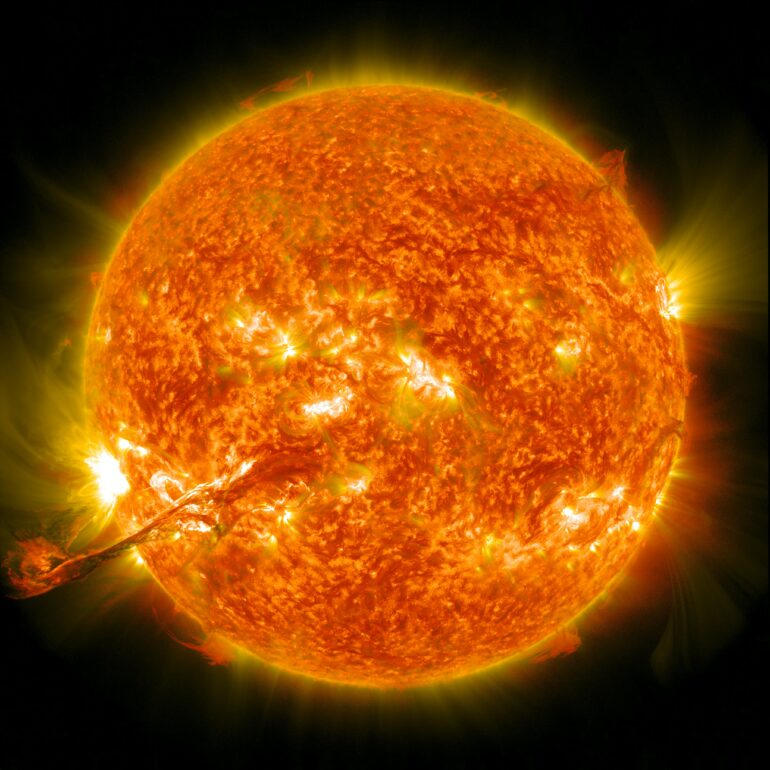On Feb. 4, 2022, SpaceX launched 49 satellites as part of Elon Musk’s Starlink internet project, most of which burned up in the atmosphere days later. The cause of this more than US$50 million failure was a geomagnetic storm caused by the Sun.
Geomagnetic storms occur when space weather hits and interacts with the Earth. Space weather is caused by fluctuations within the Sun that blast electrons, protons and other particles into space. I study the hazards space weather poses to space-based assets and how scientists can improve the models and prediction of space weather to protect against these hazards.
When space weather reaches Earth, it triggers many complicated processes that can cause a lot of trouble for anything in orbit. And engineers like me are working to better understand these risks and defend satellites against them.
The Sun occasionally blasts huge amounts of particles into space during active events like solar flares and coronal mass ejections.
What causes space weather?
The Sun is always releasing a steady amount of charged particles into space. This is called the solar wind. Solar wind also carries with it the solar magnetic field. Sometimes, localized fluctuations on the Sun will hurl unusually strong bursts of particles in a particular direction. If Earth happens to be in the path of the enhanced solar wind generated by one of these events and gets hit, you get a geomagnetic storm.
The two most common causes of geomagnetic storms are coronal mass ejections – explosions of plasma from the surface of the Sun – and solar wind that escapes through coronal holes – spots of low density in the Sun’s outer atmosphere.
The speed at which the ejected plasma or solar wind arrives at Earth is an important factor – the faster the speed, the stronger the geomagnetic storm. Normally, solar wind travels at roughly 900,000 mph (1.4 million kph). But strong solar events can release winds up to five times as fast.
The strongest geomagnetic storm on record was caused by a coronal mass ejection in September 1859. When the mass of particles hit Earth, they caused electrical surges in telegraph lines that shocked operators and, in some extreme cases, actually set telegraph instruments on fire. Research suggests that if a geomagnetic storm of this magnitude hit Earth today, it would cause roughly $2 trillion in damage.

The Earth’s magnetic field acts as a shield that absorbs most solar wind.
NASA via WikimediaCommons
A magnetic shield
Emissions from the Sun, including the solar wind, would be incredibly dangerous to any life form unlucky enough to be directly exposed to them. Thankfully, Earth’s magnetic field does a lot to protect humanity.
The first thing solar wind hits as it approaches Earth is the magnetosphere. This region surrounding the Earth’s atmosphere is filled with plasma made of electrons and…



